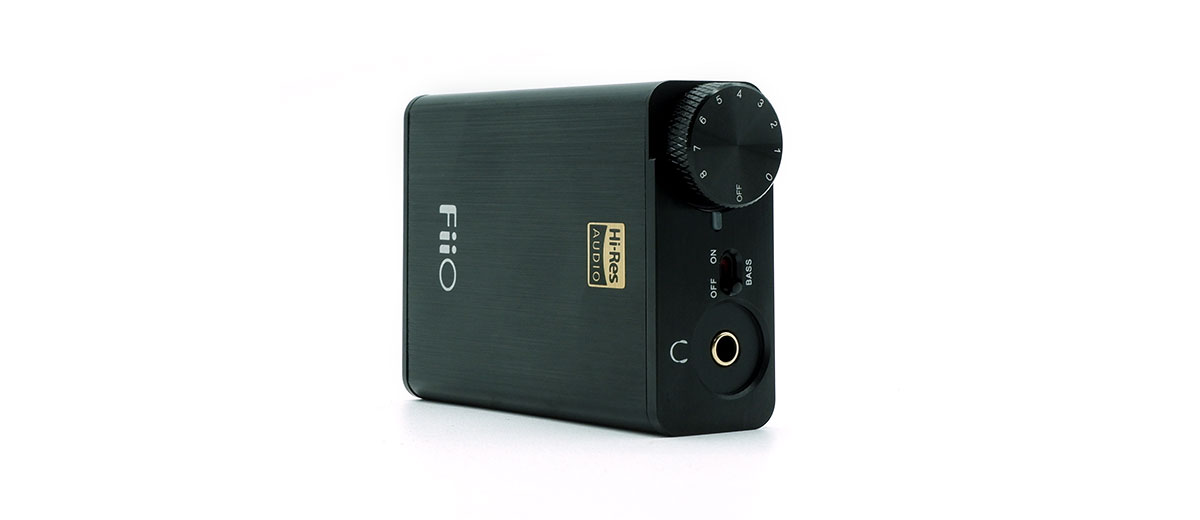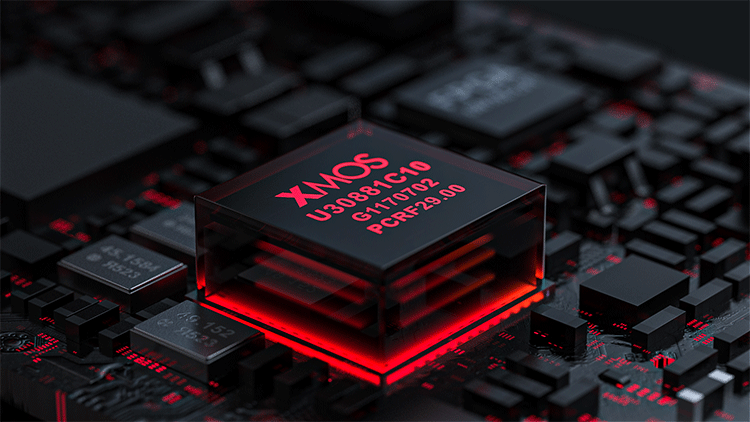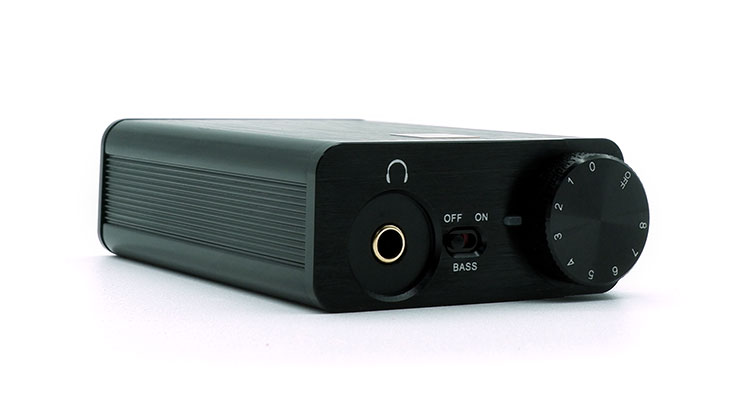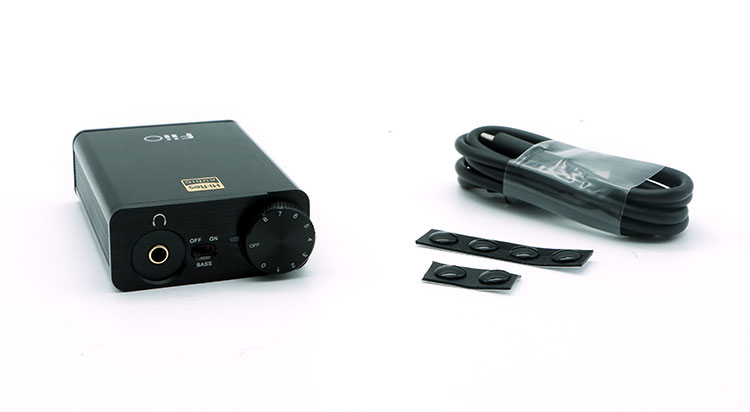The FiiO E10K TC is an update of the classic E10K portable amp/DAC featuring a PCM5102 DAC and up to 200mW of power. It is priced at $75.99
Disclaimer: The FiiO E10K TC sent to us is a sample in exchange for our honest opinion in this review. We thank FiiO for this opportunity.
To learn more about FiiO reviews on Headfonics you can click here.
Note, this 2-page review follows our new scoring guidelines for 2021 which you can read up on here.
Back in 2019, the first FiiO K3 was released, and I immediately thought that it was the end of the line for the more dated E10K. However, the E10K continued to stay in production and distribution despite the K3’s release.
This year, FiiO decided to refresh both miniature desktop DAC/Amps. We were given the privilege to take a closer look at the new K3 2021 a few weeks ago. This week, we take a closer look at the refresh of a FiiO classic, the E10K TC, with the most glaring improvement being the upgrade to a USB C port.
Tech Highlights
While the new E10K TC retains the same DAC chip as the original E10K Olympus 2, the TC version is not just a port upgrade. While still being equipped with the classic PCM5102 DAC chip, the E10K TC has improved filtering circuitry that promises a flatter frequency response and better delay response.
Upstream to the DAC chip, the USB controller has also been replaced with an XMOS XU208. This also means that the E10K TC is now compliant with USB audio mode 2.0.
The combination of the new USB controller, and the PCM5102 DAC chip allows the E10K TC to decode PCM signals up to 32BIT/384kHz ensuring that the E10K TC is still capable of most of the files that are available in the market today.
Aside from decoding capabilities, the E10K TC still works both as a pure DAC through its line-level outputs and the headphone output section. The headphone output section is capable of 219mW of output power into a 32Ω load.
Design
When it comes to the aesthetics of the E10K TC, it pretty much looks the same as the original E10K with the only difference being the USB C port at the back. The chassis of the E10K TC is still made of the same brushed aluminum finished in glossy black paint.
The front of the device has a headphone jack, bass boost switch, and a volume knob that doubles as a power switch. At the rear of the device, there is of course the USB C input port together with other output options.
The switches on the E10K TC are still the same as ones that I’ve seen with older FiiO devices, but if it worked then, I’m sure it will work fine today.
Despite the diminutive size of the E10K TC, I’m not so worried about it sliding around my desk since it comes with some grippy rubber feet. Overall, FiiO just took a tried and tested design, and refreshed it with a USB C port to keep up with the changing times.
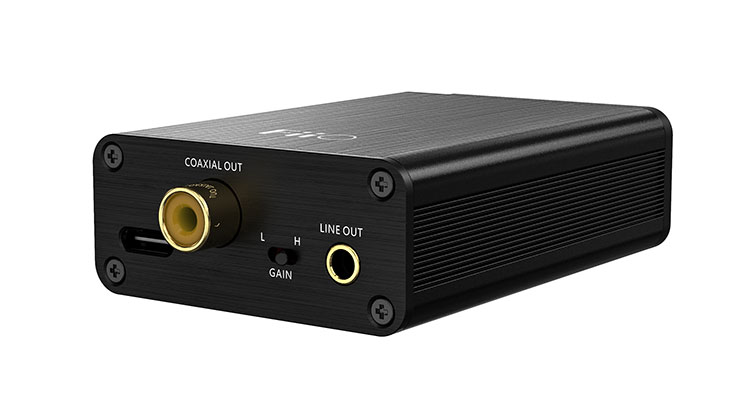
I/O
As the name suggests, the E10K TC has a type-C USB port, and that serves as the only available input option of the E10K TC for both power and data. However, the little E10K TC offers more output options than the size might suggest.
Having a standard 3.5mm headphone output in front, while there are 2 output options in the rear. The E10K TC has both a standard 3.5mm analog output and an option for a coaxial digital output which allows the E10K TC to also work as a USB to coaxial digital converter.
Controls
Controls for the E10K TC are simple, with the volume knob doubling as a power switch, so turning it on requires the twist of the volume knob. Then you can proceed to increase the volume with the volume knob having graduations around the knob to indicate the volume level of the device.
Then there is an option for bass boosting in front, which lifts the bass on the headphone amplifier section. At the rear of the device, there is a gain switch that will either run the E10K TC at low gain, which has a lower noise floor, or high gain which can produce more power.
Packaging & Accessories
From my years of buying FiiO products, I’ve always noted how practical but generous they are when it comes to accessories. The packaging that the E10K TC arrived in is typical of FiiO products, which is a thin cardboard box that remains sensible as it is arranged to ensure that the E10K TC won’t be subjected to bumps or damage along the way.
Inside the box, the E10K TC is simple enough, having just the DAC itself, a USB C to USB A cable, 6 rubber feet, and the documentation about the E10K TC. Of course, this is what you would typically need with the E10K TC to get going.
Sound Impressions
Summary
While the E10K TC strives to remain generally neutral, allowing each frequency to shine through equally without any emphasis, the E10K TC also ends up being more relaxed over a wide frequency range. This ensures that bass drums are not overly weighty, while treble frequencies don’t make things sound piercingly bright.
There isn’t much in terms of extra airiness though, so the E10K TC doesn’t introduce artificial space. However, there is still enough air to maintain an overall natural soundstage presentation.
Timbre
FiiO has strived for a smooth tonal balance with the E10K TC so there isn’t much to say in terms of distinct bumps and niggles across the frequency response.
However, there is a notable roll-off at both extremes of the frequency spectrum, so sub-bass rumble is more background than upfront, while the air in the upper registers isn’t as noticeable.
When it comes to bass punch, the E10K is generally neutral, while having a good amount of bass definition allowing the textures of drum hits and bass guitars to be easily perceived.
The E10K TC is more reserved when it comes to the overall impact of each drum hit, sounding rounded and more pushed back. This allows the bass to have an equal emphasis with the rest of the frequency response.
If there is a need for more weight behind bass notes, FiiO also provides the E10K TC with a bass boost switch. This allows the E10K TC to transform into an overall warmer amplifier. The caveat is that the E10K TC will end up making the bass blur into the other frequencies, resulting in a loss of overall midrange clarity and texture.
When it comes to the vocal presentation, the E10K TC is also fairly natural to euphonic sounding This allows the vocal presentation of crooners such as Michael Buble to shine through. Guitars have a warmer tonal shift while pianos have an overall smoother timbre without sounding particularly heavy.
With a smoother treble response, the E10K TC won’t embellish midrange instruments with sibilance. Instead, it keeps them tame and controlled, while still presenting a textured and edgy treble response, allowing cymbals to still have some bite. However, the treble simply refuses to become more emphasized compared to the rest of the frequency response.
Staging & Dynamics
A more rolled-off treble response allows the E10K TC to have an overall more natural soundstage presentation. This ensures that there isn’t much in terms of artificially-induced separation between instruments while generating an overall flatter soundstage presentation with most recordings.
The directionality of the imaging is quite accurate though, so images are formed precisely where I expect them to be albeit having boundaries that are blurred together. Although some sounds may be pushed further out, most of the sound feels like it’s part of a wall of sound that formed around my head.
Surprisingly, the E10K TC can depict gentler passages with a respectable amount of control and finesse. However, larger crescendos just don’t have that much weight behind them, which consequently leaves me wanting when listening to large orchestral recordings.
Click on page 2 below for pairings and select comparisons.




